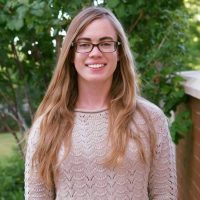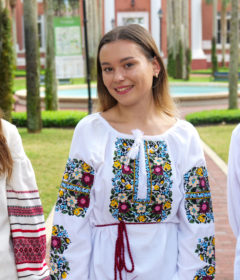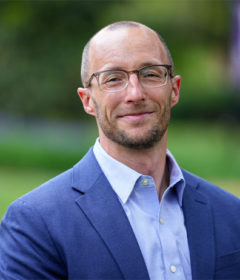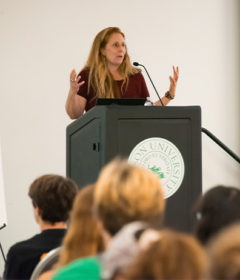Caudill to Speak about Gravitational Waves at Stetson on April 16

Stetson University alumna Sarah Caudill, Ph.D., who was a member of the team that had the first direct detection of gravitational waves, will return to campus on Monday, April 16, to present “When Neutron Stars Collide: Cosmic Messages from GW170817.”
During this talk, Caudill will explain how gravitational signals allow us to test the fundamental physics of our universe including the speed of light, the nature of extreme matter and gravity, and the origin of the heavy elements. Caudill’s lecture is free and open to the public and will begin at 7:30 p.m. in Rinker Auditorium, in the Lynn Business Center, 345 N. Woodland Blvd., in DeLand.
On Aug. 17, 2017, at 8:41 a.m. EDT, a gravitational-wave signal named GW170817 passed by Earth. This signal was different from others previously detected. Nearly 130 million years ago, two neutron stars collided and sent out a gravitational-wave ripple across the universe. Unlike the previous signals from black holes, this neutron star signal was accompanied by quite a light show, including gamma-rays, optical light, radio waves and x-rays. According to scientists, detection of a gravitational wave in 2015 helped to prove Einstein’s theory of relativity.
Now, Caudill is a gravitational-wave scientist at Nikhef, the Dutch Institute for Subatomic Physics, where she analyzes data from the Laser Interferometer Gravitational-wave Observatory (LIGO) and the Virgo detector. She is a research and development lead scientist for searches for gravitational waves from compact binary coalescences, the hallmark search for advanced LIGO and advanced Virgo. Sarah guided detection pipeline development that led to the 2017 Nobel Prize for Physics-winning discoveries of gravitational waves from binary black holes.
She has been a member of the gravitational-wave community for 12 years. While earning a bachelor’s degree in physics from Stetson University in 2006, she worked as a research assistant at the California Institute of Technology’s LIGO laboratory. She earned a Ph.D. in physics from Louisiana State University under the guidance of Gabriela Gonzalez, Ph.D., for her work on detection pipelines for ringdown gravitational waves using machine learning classification. For the last five years, she was a postdoctoral researcher at the Center for Gravitation, Cosmology and Astrophysics at the University of Wisconsin-Milwaukee where she joined the GstLAL search team, the first matched-filter-based pipeline to discover a gravitational wave in low-latency. She has co-authored dozens of publications as a member of the LIGO and Virgo Scientific Collaborations.
2018 Stetson Showcase – April 17, 2018
Caudill will also present the keynote address at the Stetson Showcase banquet the evening of April 17. During this annual event, which is free and open to the public, undergraduate students share their research through presentations, posters, music and theater performances. Student projects cover a diverse range of topics across many academic disciplines. For example, from the School of Business Administration there will be four, one-hour sessions each focusing on a key area: entrepreneurship and family enterprise, ethics, sales, and finance and accounting. Each session will contain four presentations, all taking place in the Rinker Auditorium.
-Heather Hunter



